January 17-21, 2019

What an amazing few days we had in Cusco and the surrounding region. I must confess that before this trip I had thought of Cusco as just a stopover place on the way to Machu Picchu. But it is much more than that. So much more that I’m splitting this into two blog posts; there’s too much for one!
Cusco
Cusco was the centre of the Incan Empire, and really started to grow in the 14th century. The Inca civilization, and its headquarters, Cusco, flourished until the Spanish invaded in 1528, and ultimately completely defeated the Inca in 1572. (The Incan forces had been weakened by smallpox — introduced by the Spanish — and subsequent internal battles for leadership of the Empire.)

Many of the buildings in Cusco’s beautiful Spanish Colonial square include stones that were repurposed from much better quality Incan construction that the Spanish destroyed in order to impose Catholicism.
The Cusco of today is a blend of walls that were built by the Inca and still stand, perfectly straight, undisturbed by earthquakes due to their magnificent construction techniques, and Spanish colonial buildings (often built with Incan stones that they had torn down in an effort to assert their primacy).
It isn’t known how the Inca worked the stones so perfectly, but their walls needed no mortar to stay together: they were perfectly fitted, sometimes with incredible complexity. The most famous of those remaining stones is the 12-angled one, although there is a smaller 15 angled stone around the corner.

The famous 12-angled stone in an Incan wall in Cusco’s historic core.
You can buy a BTC (Boleto Turistico de Cusco) that lets you into 16 nearby sites and is valid for 10 days. We managed to visit seven of the sites, and a few others that weren’t included on the card.

I had heard a lot about altitude sickness in Cusco, which is at 3,400 metres (~11,000 feet) above sea level. As with our experience in Quito, we found ourselves easily winded during our first couple of hours walking around town, then napped for a couple of hours, and were fine after that. I tried chewing on coca leaves and drinking coca tea, but didn’t like the taste. Muña, which is a type of mint, makes for a nice tea though.

As we were heading back to our hotel for that nap, we heard the sounds of a marching band at our street corner, so we went to check it out. Turns out it was Saint Anthony’s day, a big celebration at the neighbourhood church. There was a band, dancers in folkloric costumes, and lots of beer and food. DH and I got “pinned”, in honour of St. Anthony (whether we wanted to be or not), and then, of course, pressured into a donation.
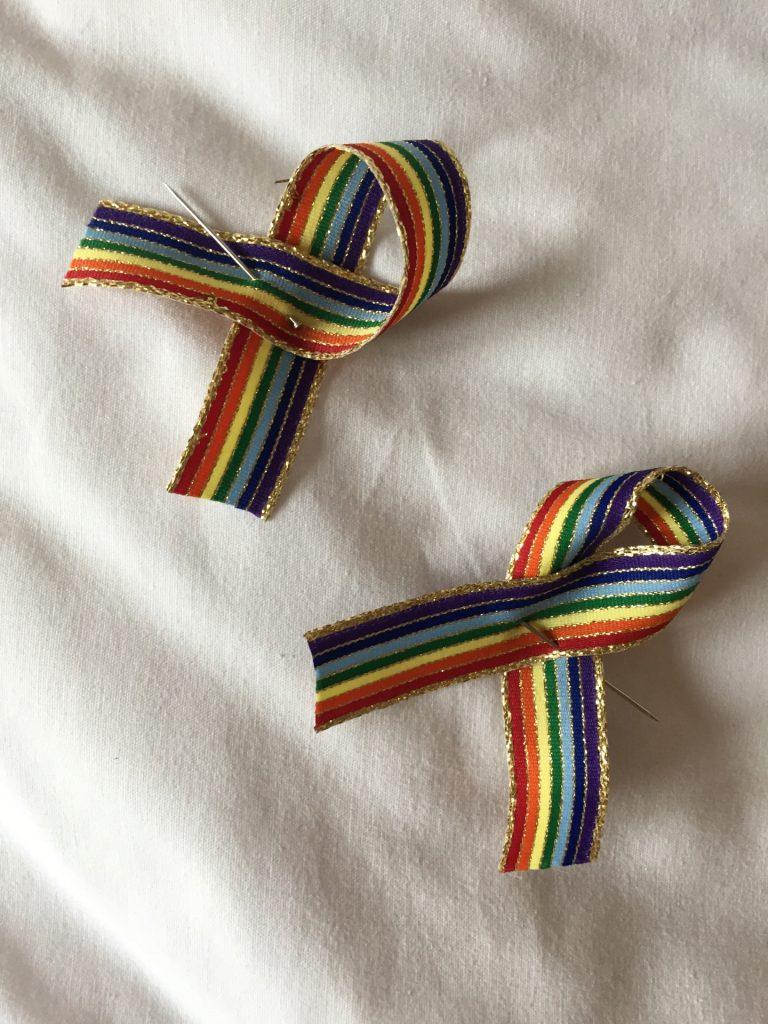
Cusco has become incredibly touristy, and everywhere you turn you will find women in traditional Andean outfits holding baby lambs or alpaca, offering to let you photograph them for a fee, and selling handicrafts. I totally respect their desire to be paid for being photographed by the hordes of gawking tourists, but I didn’t want to pay for a posed, cliché photo. However, when I saw a little old lady, seemingly oblivious to the tourists, weaving on a doorstep, I went over to ask her about how the weaving is done.
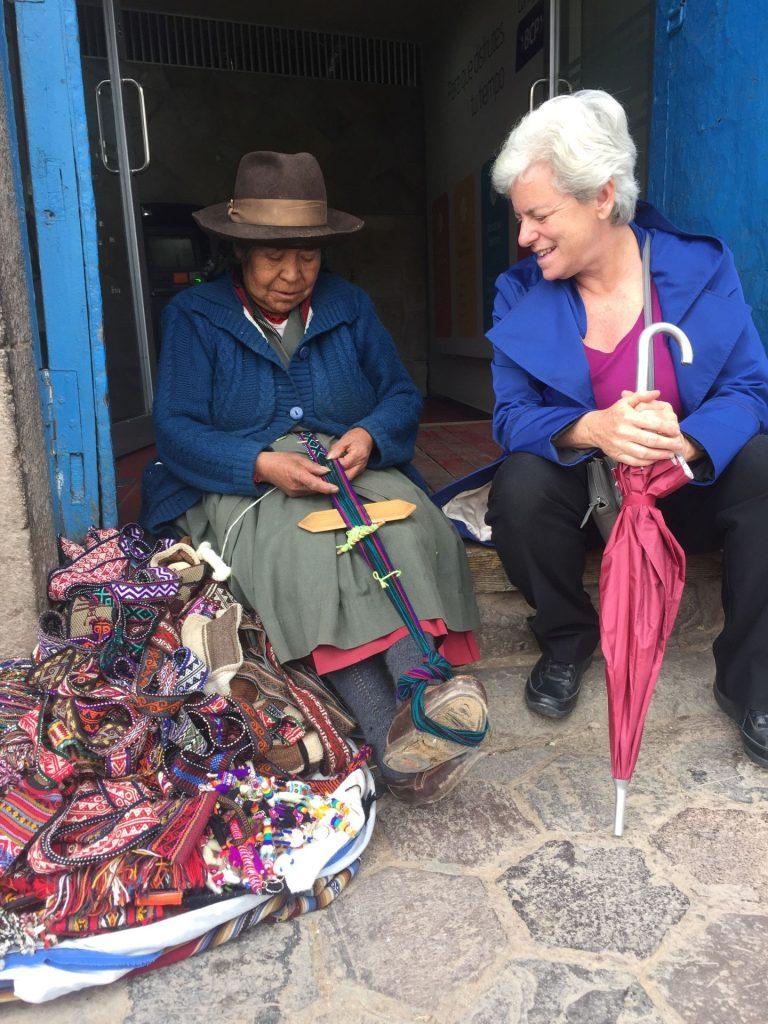
She was quite willing to show me. (Boy can her fingers move quickly among the threads!) Of course, I then bought a few of the belts that she had made. After that, it no longer seemed rude to ask for a picture, and she happily obliged.
Restaurants in Cusco
Cusco has everything from your standard fast food outlets to truly haute cuisine. Our first night we had a lovely (in quality, taste and presentation) dinner at Morena Peruvian Kitchen . They come to your table to make the nightly cocktail special if you want one. (It was delicious!)
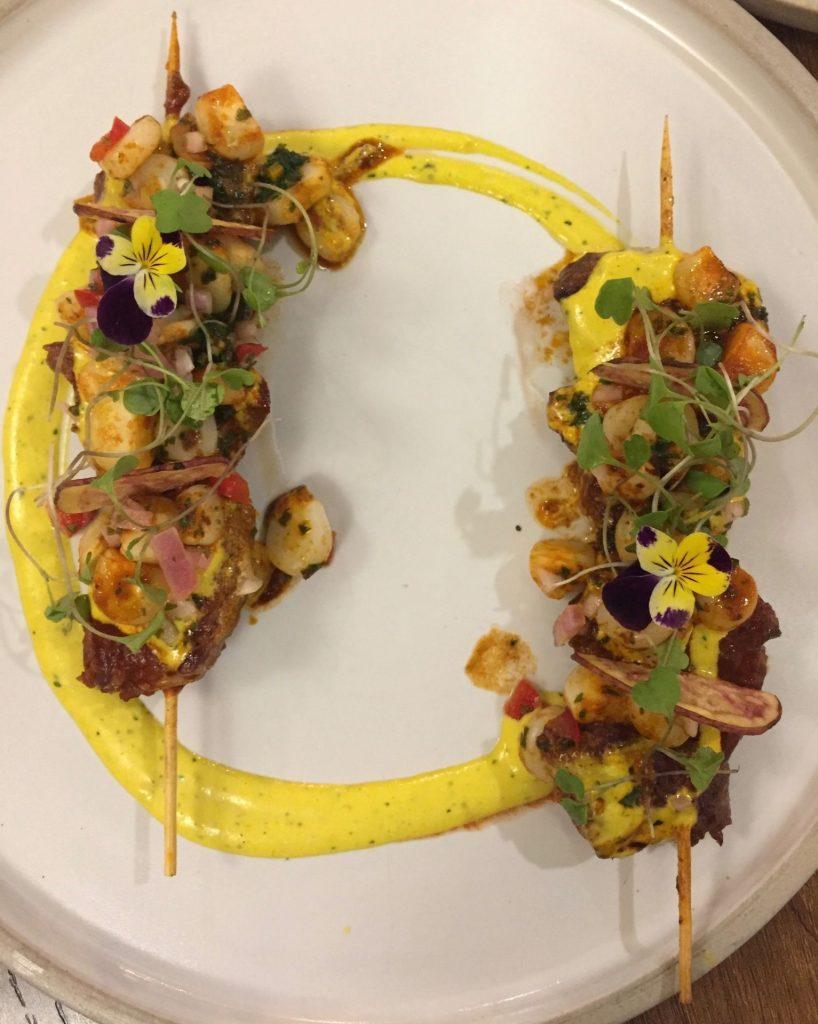
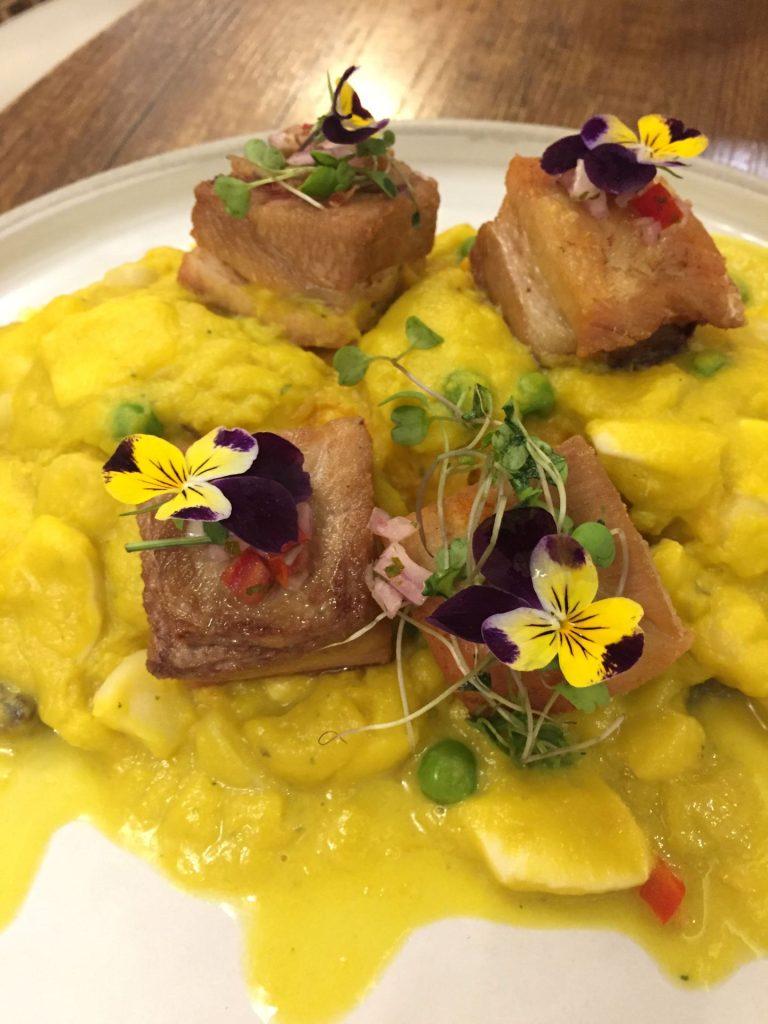
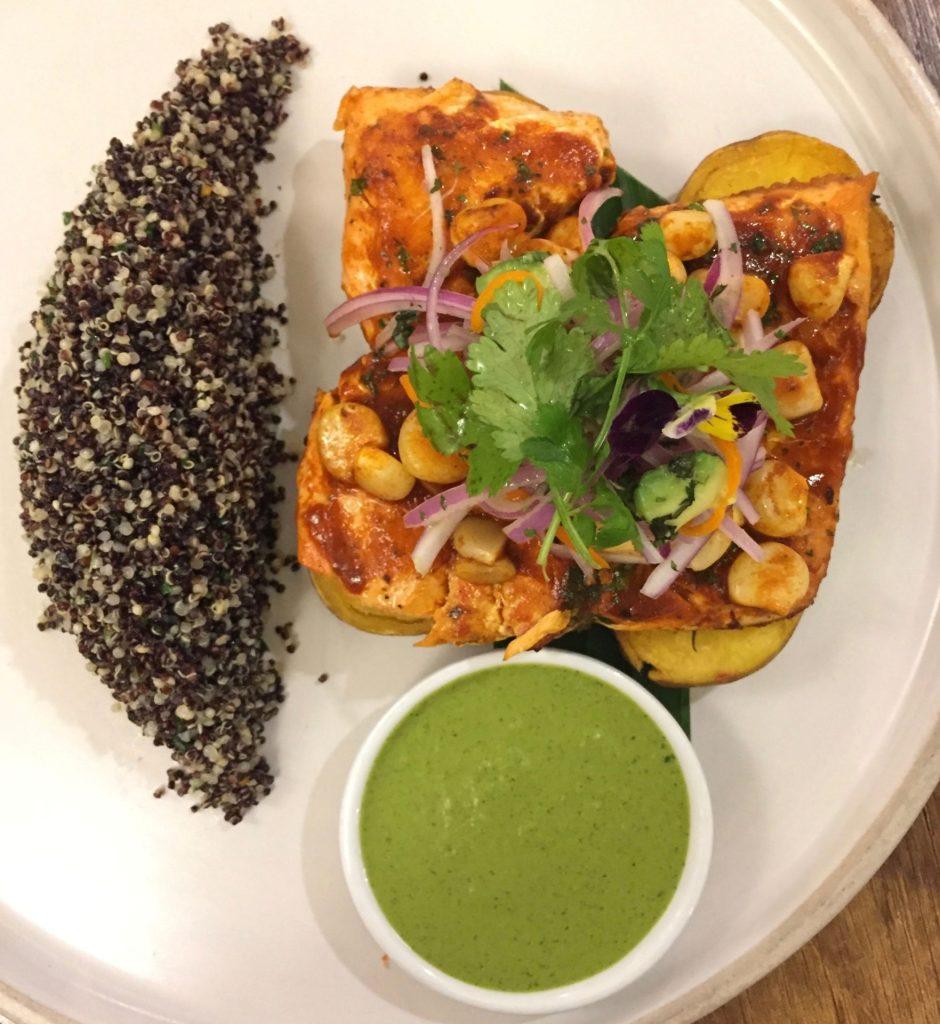
We also had a high quality, beautifully presented meal at Organika on our last day.
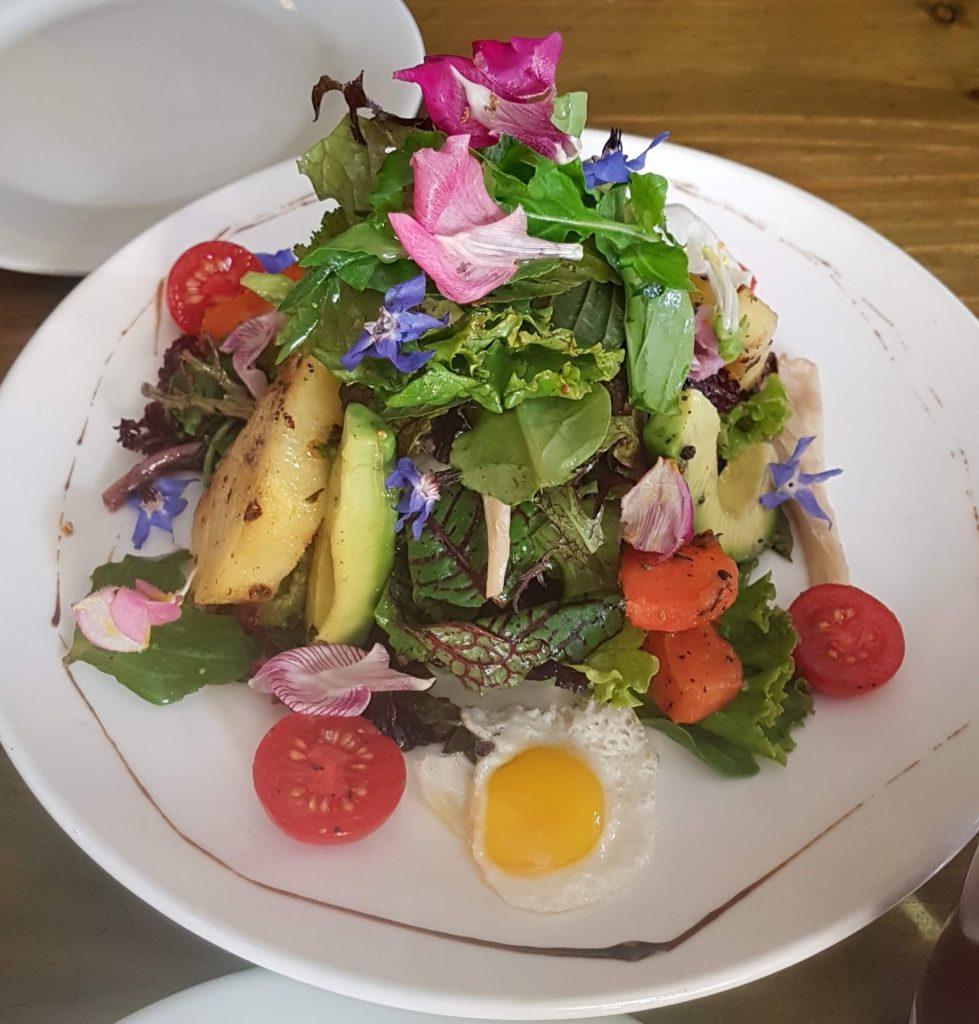
Must-see Sites Near Cusco
We visited several ruins in addition to Machu Picchu, and at all of them we were wowed by the Incan stone work and construction techniques. Here are a few examples.
Sacsayhuamán
(aka by the gringos as Sexy Woman, though it looks from the spelling more like Sexy Human)
Originally built by the pre-Incan Killke culture in about 1100, this hilltop fortress and religious complex was massively expanded by the Inca in the 13th century. It covers some 3000 hectares of land overlooking Cusco. At an elevation of 3,701 m (12,142 ft), the fortress was built using stones far bigger than any human. It is hard to imagine how they managed to get them up there and put in place. I’ve been to Stonehenge, and it pales in comparison to this. Not only were the stones enormous, but they were perfectly fitted together. Even now, hundreds of years later, you can’t fit a pin between these massive stones.
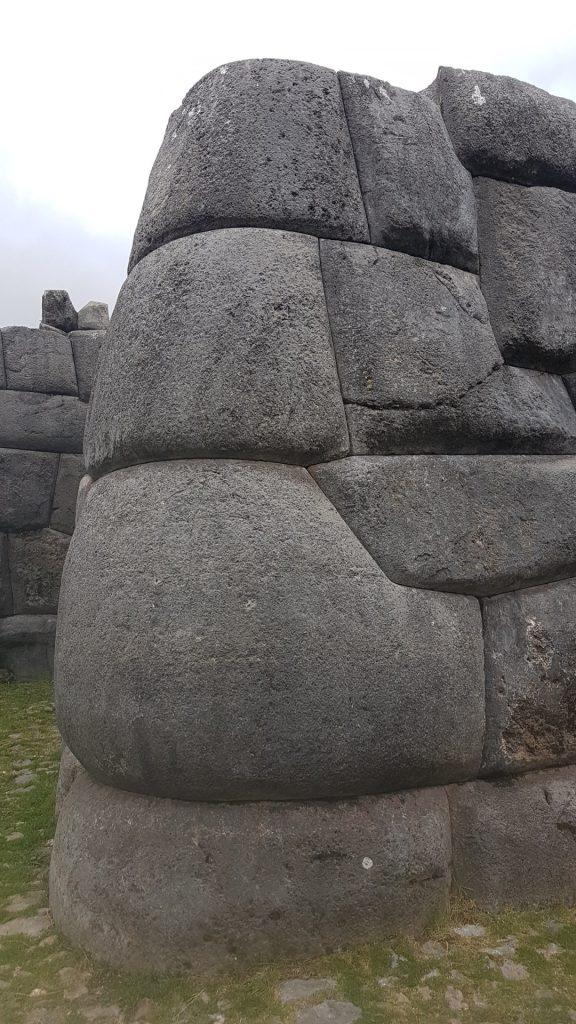
They also had curved corners, and, in many places, double walled construction. It is thought that the combination of these attributes is what let the site survive earthquakes largely intact. Sadly, surviving the Spaniards, who took apart a lot of the buildings to use the stones in new Spanish colonial buildings in Cusco, was a harder feat.
The site has a huge central plaza, which can hold thousands of people. It is still used for major events, including the annual celebration of the winter solstice in June – the ‘Inti Raymi’rata (Quechua for “sun festival”).
Q’ENQO
Not far from the Sacsayhuamán site, is Q’enqo. The name means zigzag or labyrinth, and among it’s labyrinth structures is a semi-natural underground space, as well as numerous waterways.
TAMBOMACHAY
Moving a bit further from Cusco stands a site known as the “Inca baths”. Like the Romans, the Inca had a great understanding of hydraulics and waterworks.
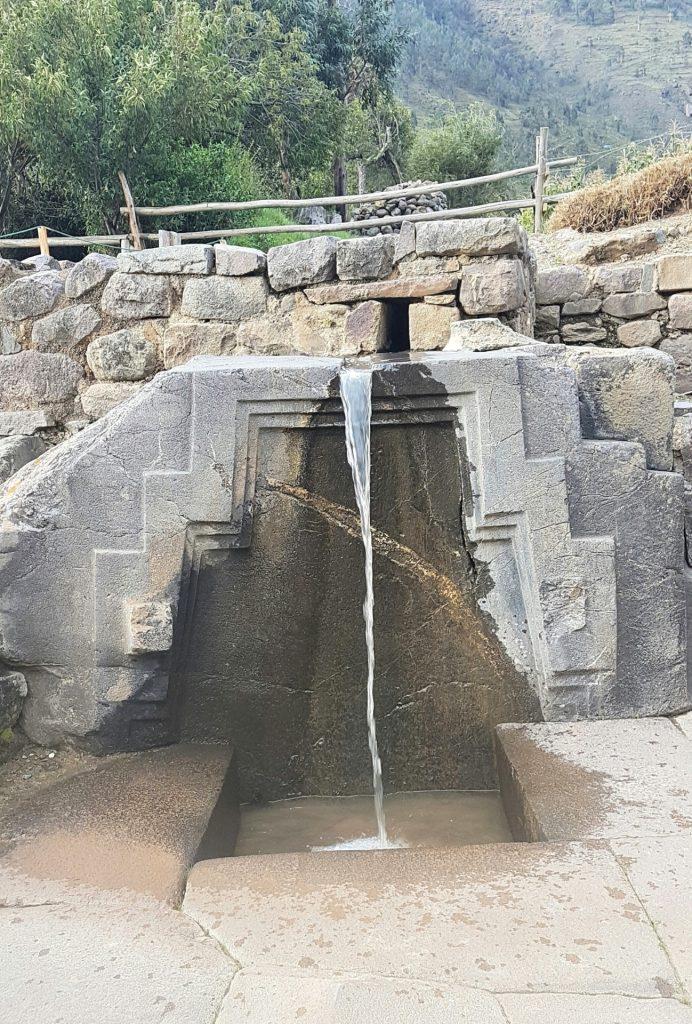
Ollantaytambo
Ollantaytambo is the town from which you take the train to Machu Picchu. (In the dry season you can take a train all the way from Cusco to Machu Picchu, but we were there during the rainy season and apparently the railway can be subject to mudslides.)
Of course, Ollantaytambo also has a ruin to visit. It had a great view over the Sacred Valley, and was the royal estate of Emperor Pachacuti.
The fortress was one of the last places to put up fierce resistance to the Spanish invaders, at one point flooding the plains below to defeat the Spanish. Unfortunately, the Spaniards returned with more forces, and eventually overcame the Ollantaytambo Incans.
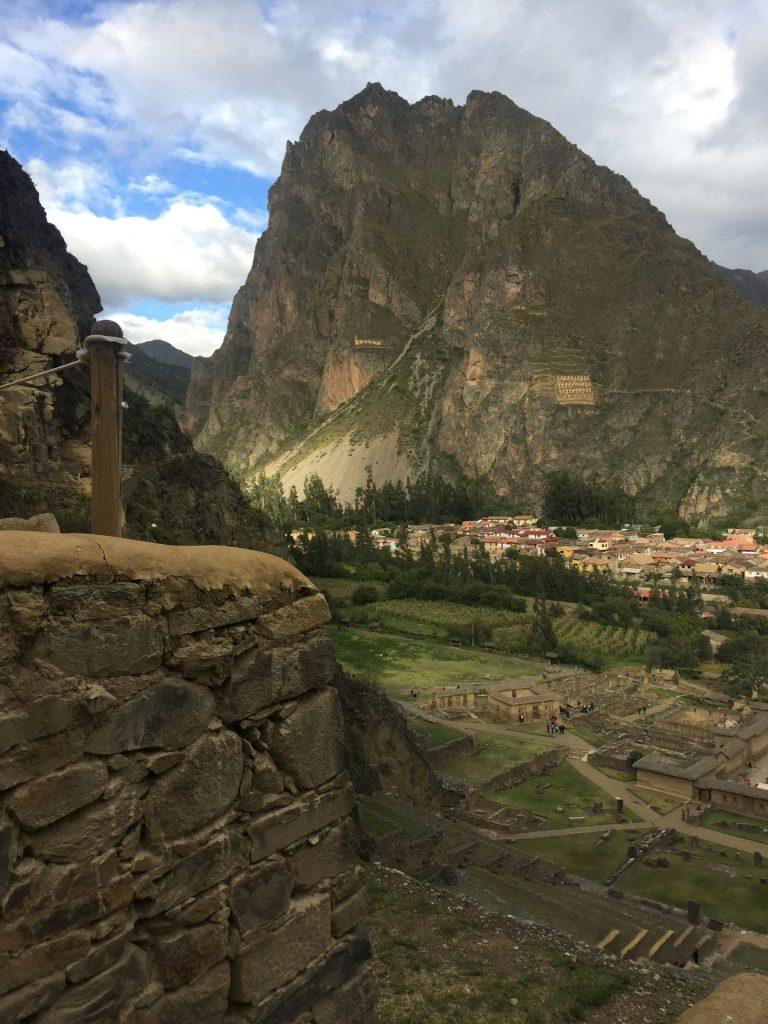
Moray
One of my favourite sites was Moray, which has a series of circular terraces.
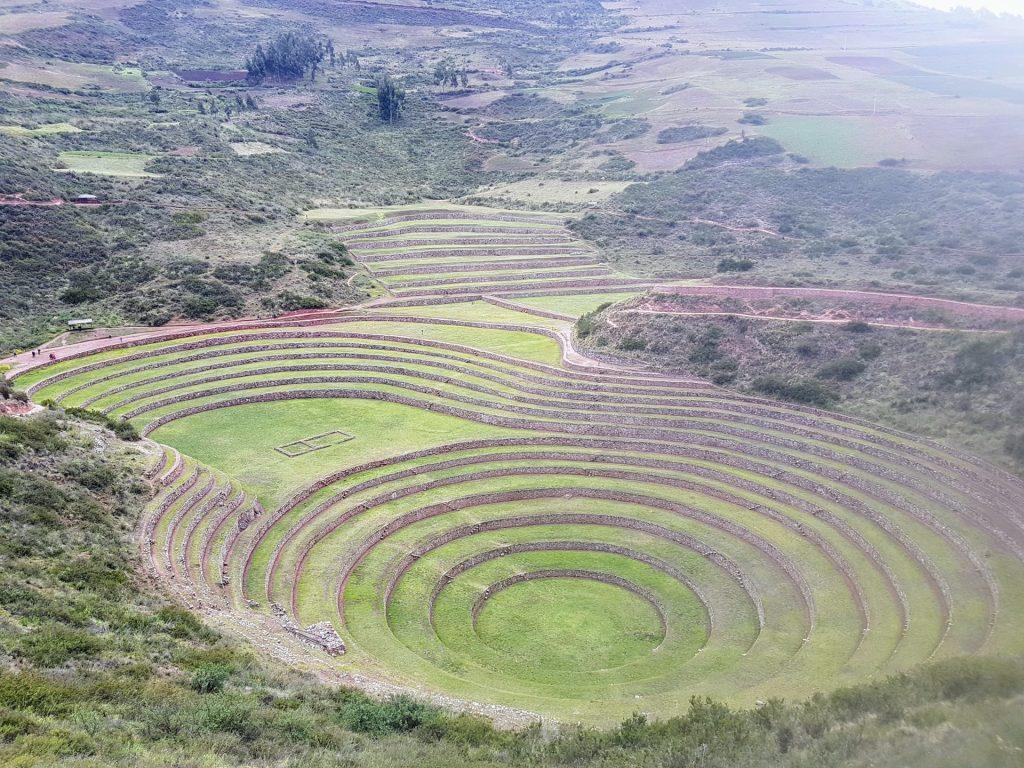
It is thought that the Inca used this as an experimental agricultural station, as the temperature can vary by as much as 15 °C (27 °F) between the top and the bottom. These temperature differences are pretty much the same as those between sea level farmland and the growing areas in the mountains.
In addition to the change in air temperature, each area had different sun and wind levels, so some 20 different micro-climates exist in Moray. [https://hidraulicainca.com/cusco/the-andenes-of-moray-in-cusco/]
Maras Salt Flats
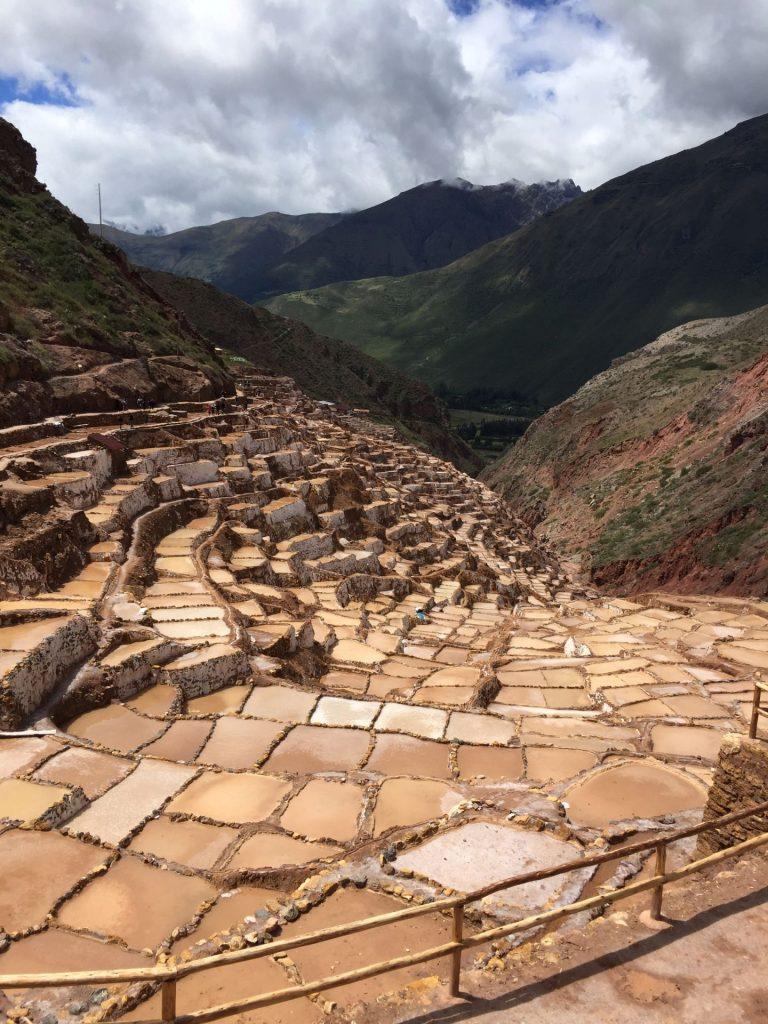
Though not at their prettiest during the rainy season, the Maras Salt Flats are fascinating. Created during the pre-Incan Chanapata era (AD200 to AD900), they take advantage of a salt water spring emanating from the mountains. There are over 4,000 little salt pools, each just a few inches deep, fed by the spring. The mountain winds and sun make the water evaporate, leaving salt behind. It is then scooped up, broken into smaller crystals, packaged and sold.
As you enter the site you can dip your finger in the warm salty stream and taste what will become salt. (Warning: do not take a gulp of this super-salty water! But swishing and gargling with it would probably be great for a sore throat!)
Run by a community cooperative, Maras salt has become famous thanks to Peruvian star chef, Gaston Acurio, who has raved about how wonderful this mineral-rich salt is and uses it in his restaurants. (To great effect, as we discovered when we ate at Astrid y Gaston.) It is now exported globally.
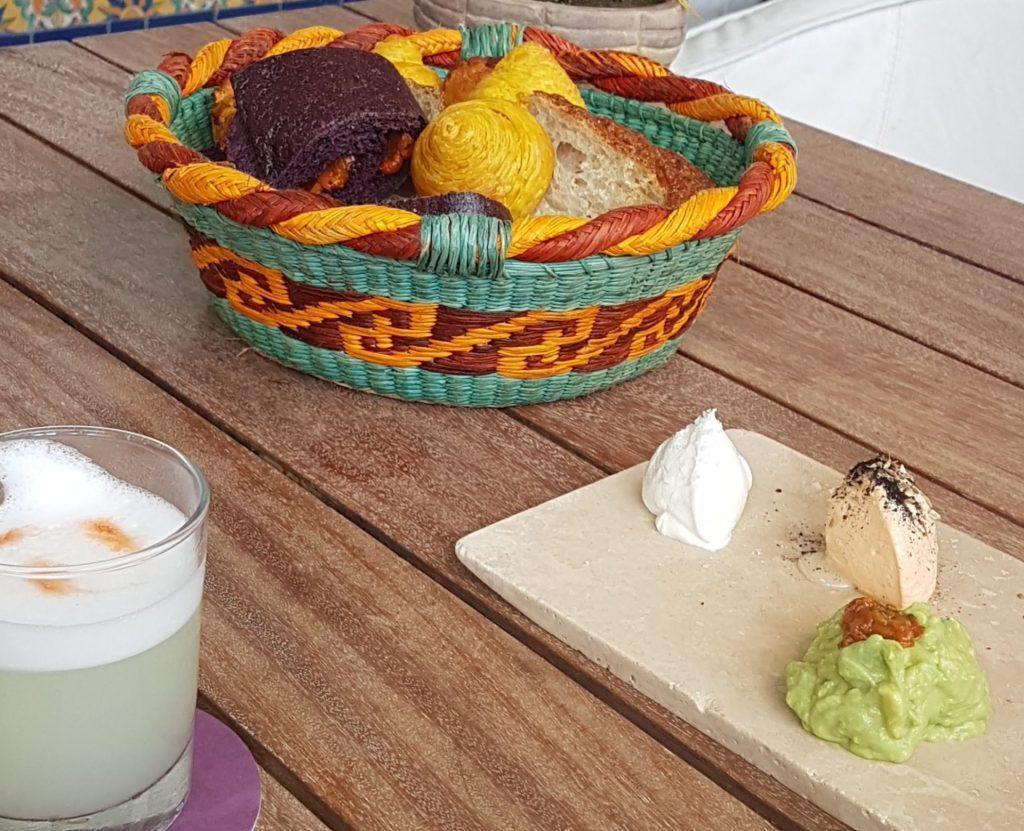
Read more in Part 2: Machu Picchu & Pisac, Peru
There is so much more to write, but I’ve run out of steam for now. In part 2 I will discuss things like:
- Our visit to Machu Picchu
- Chinchero and learning how to dye llama and alpaca wool naturally
- Pisac, where we got to know some locals and see life through a less purely touristy lens.

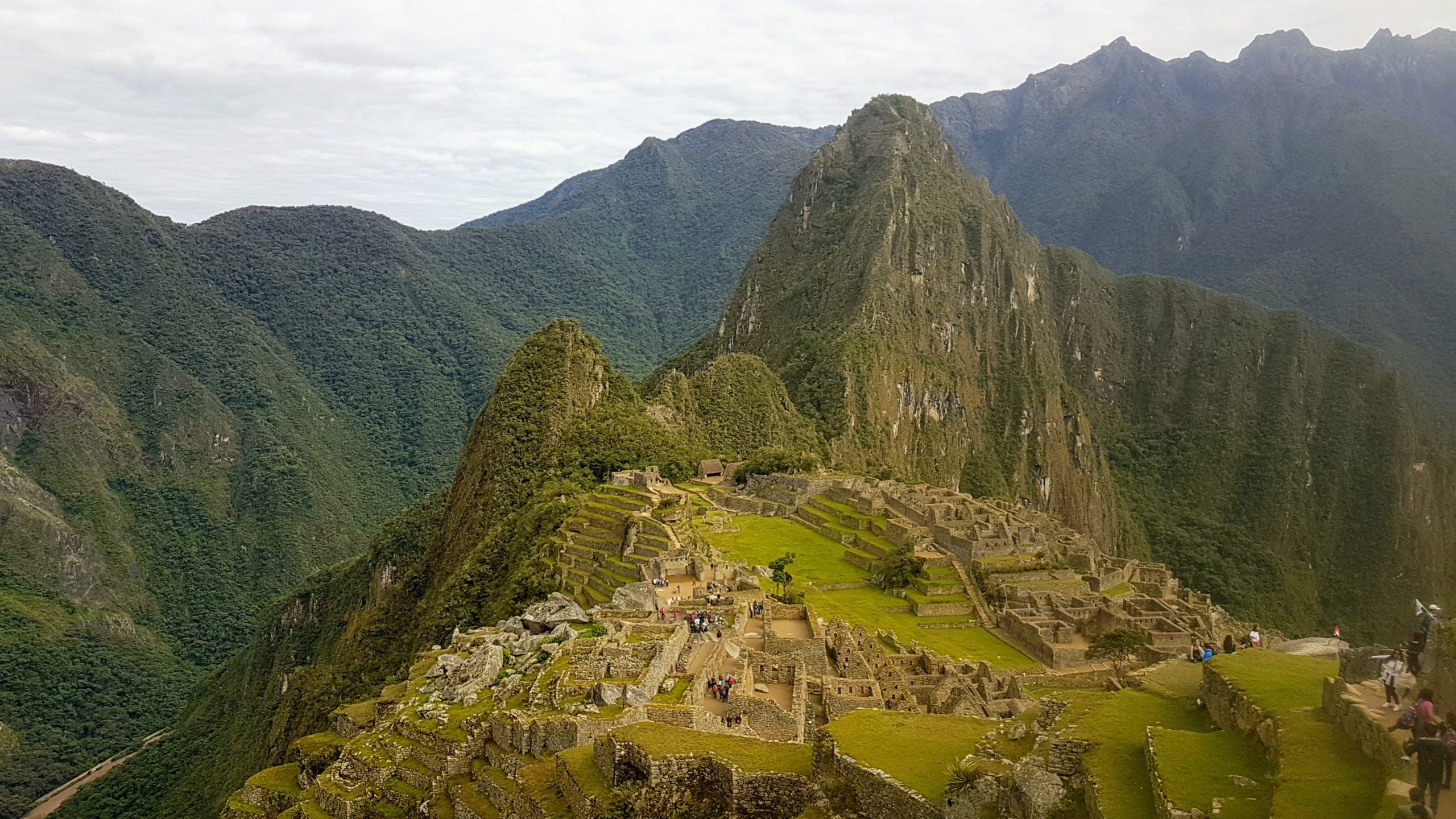
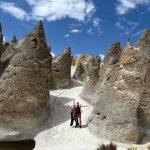
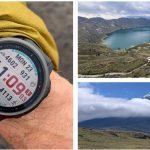
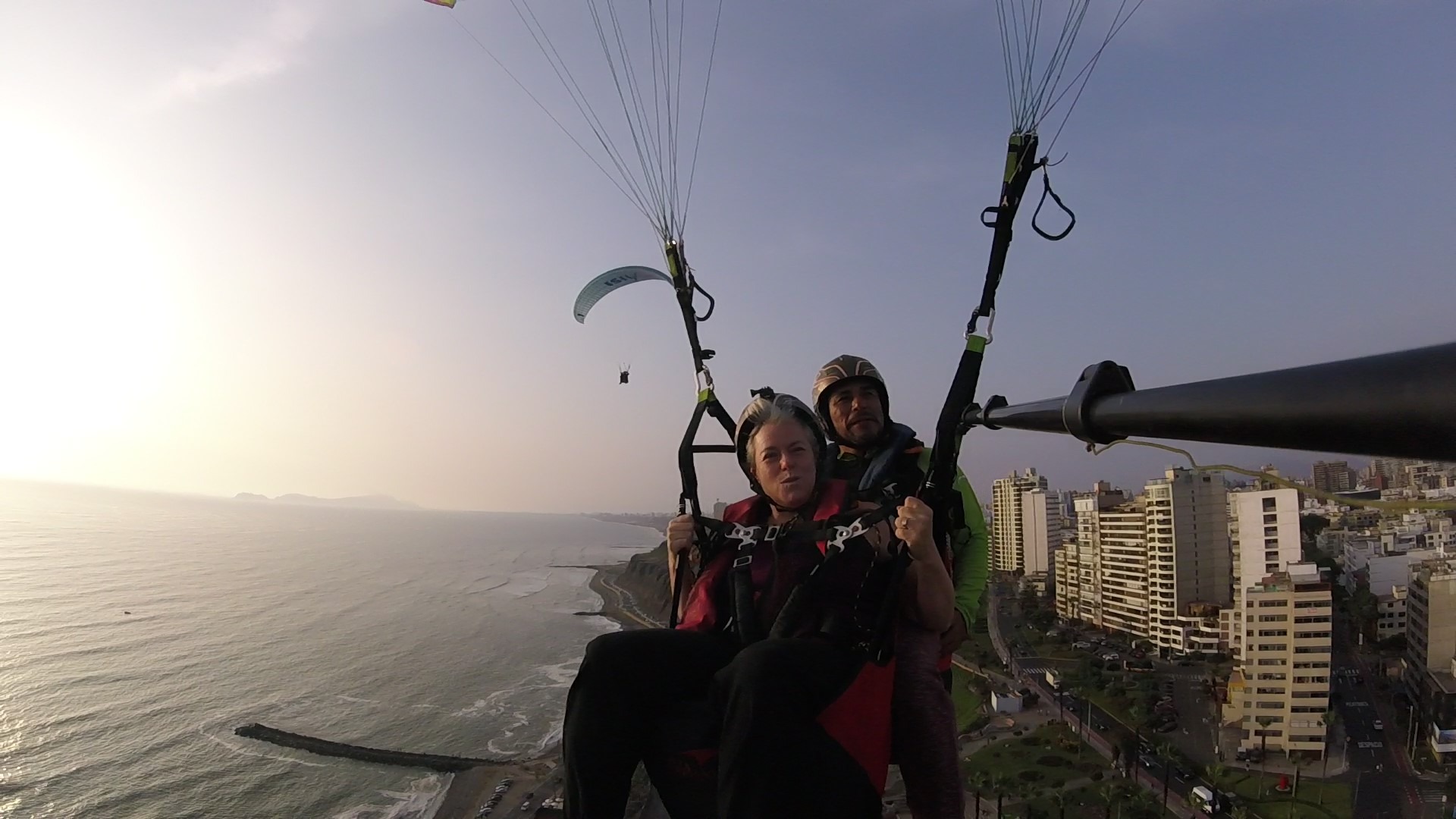
[…] 6 Essential Incan Ruins near Cusco, Peru […]
[…] I’m not doing this writeup of my Cusco trip chronologically. So if you want to read about Cusco specifically and more about some of the sites we visited, see also Part 1: 6 Essential Incan Ruins near Cusco, Peru […]